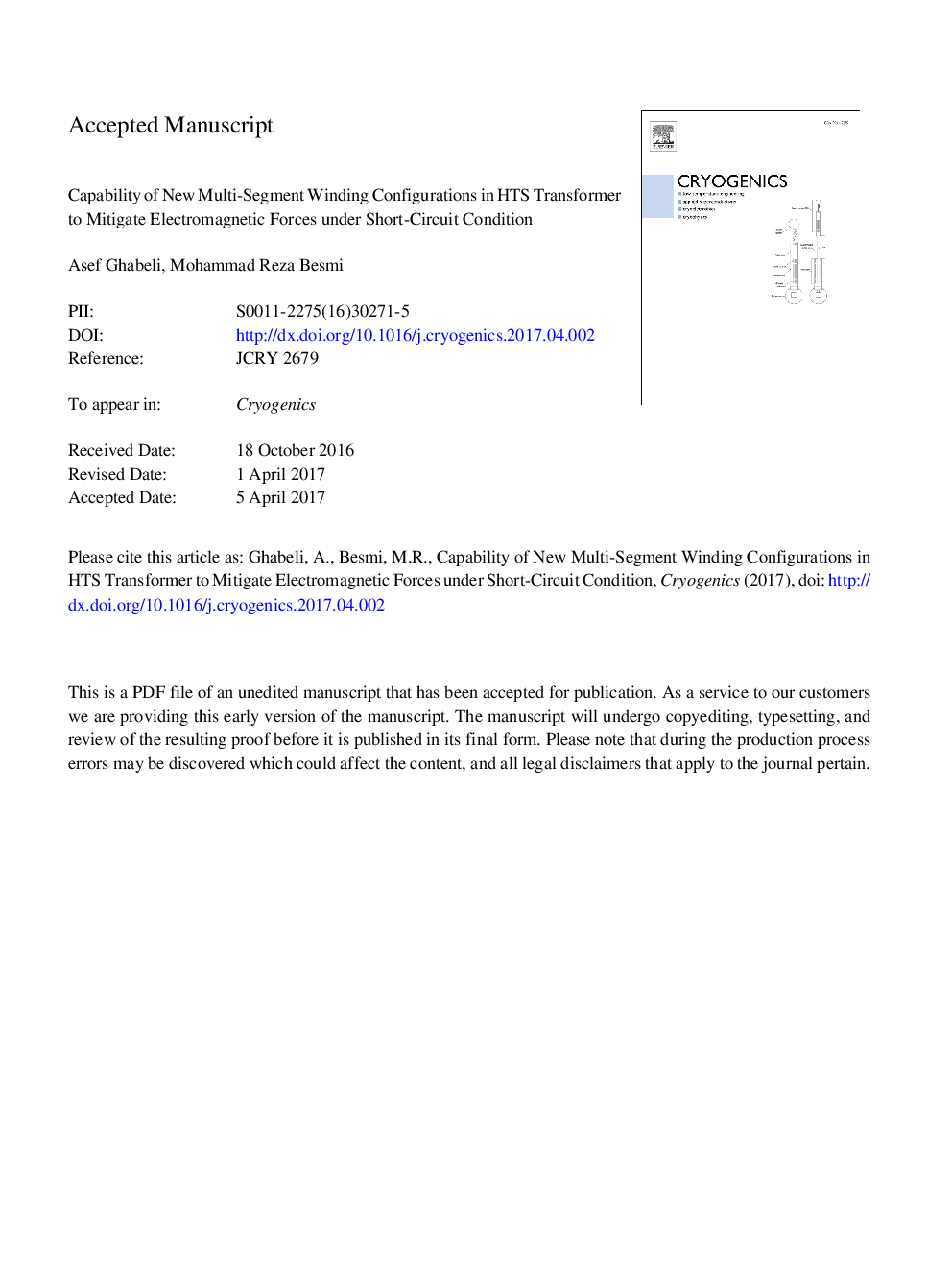| Article ID | Journal | Published Year | Pages | File Type |
|---|---|---|---|---|
| 5444121 | Cryogenics | 2017 | 23 Pages |
Abstract
The consequences of short-circuit forces for high-temperature superconductor (HTS) transformers are much more detrimental than conventional ones. That is because on one hand, HTS windings have less mechanical robustness than copper ones and on the other hand, the effects of extreme axial forces on HTS windings are irreversible and may cause irreparable damages to HTS transformers. In this paper, capability of new concentric multi-segment winding configurations in HTS transformers, proposed in Ghabeli et al. (2015), to mitigate high axial and radial electromagnetic forces due to short-circuit fault is investigated. The studied winding configurations include concentric PSP (Primary-Secondary-Primary), symmetrical and asymmetrical PSPSP (Primary-Secondary-Primary-Secondary-Primary). The study is realized with an advanced numerical method using accurate and nonlinear E-J power law via FEM-based software Flux 2D. Profiles of axial and radial electromagnetic forces in each sub-winding have been presented, analyzed and compared to each other in detail. For accurate calculation of axial and radial forces in each sub-winding, a collection of points along the longitudinal and transverse axes in the center of each sub-winding was considered. The maximum of radial and axial electromagnetic forces decrease remarkably in PSPSP winding configuration compared to PSP winding configuration. In addition, the asymmetrical winding configurations mitigate these forces more than symmetrical ones.
Related Topics
Physical Sciences and Engineering
Materials Science
Electronic, Optical and Magnetic Materials
Authors
Asef Ghabeli, Mohammad Reza Besmi,
